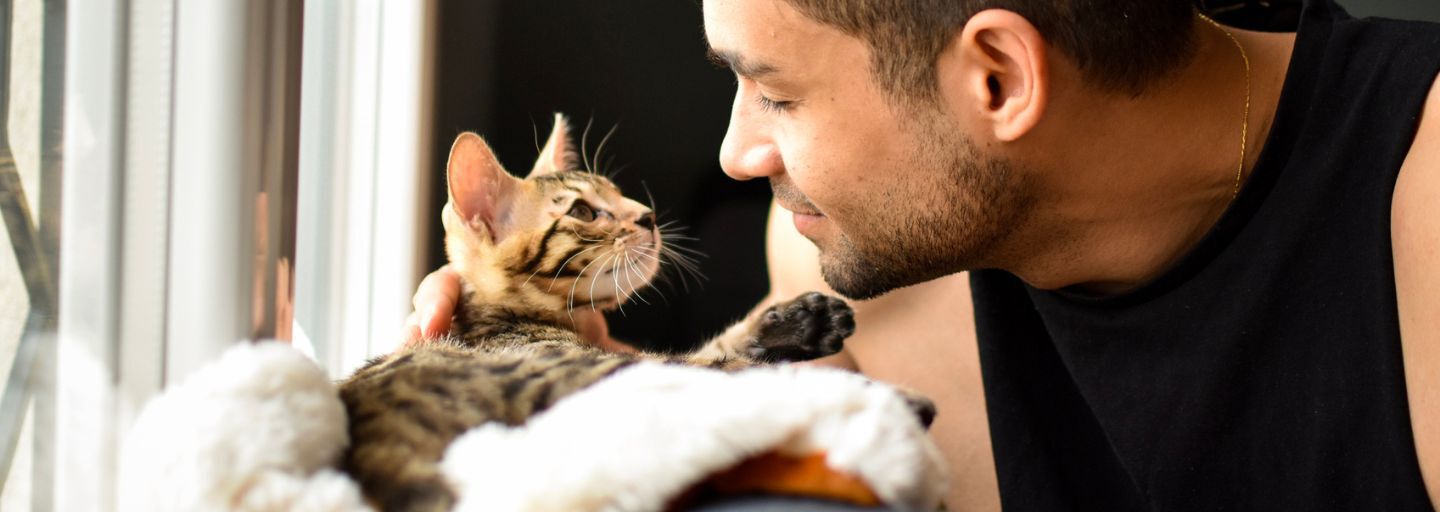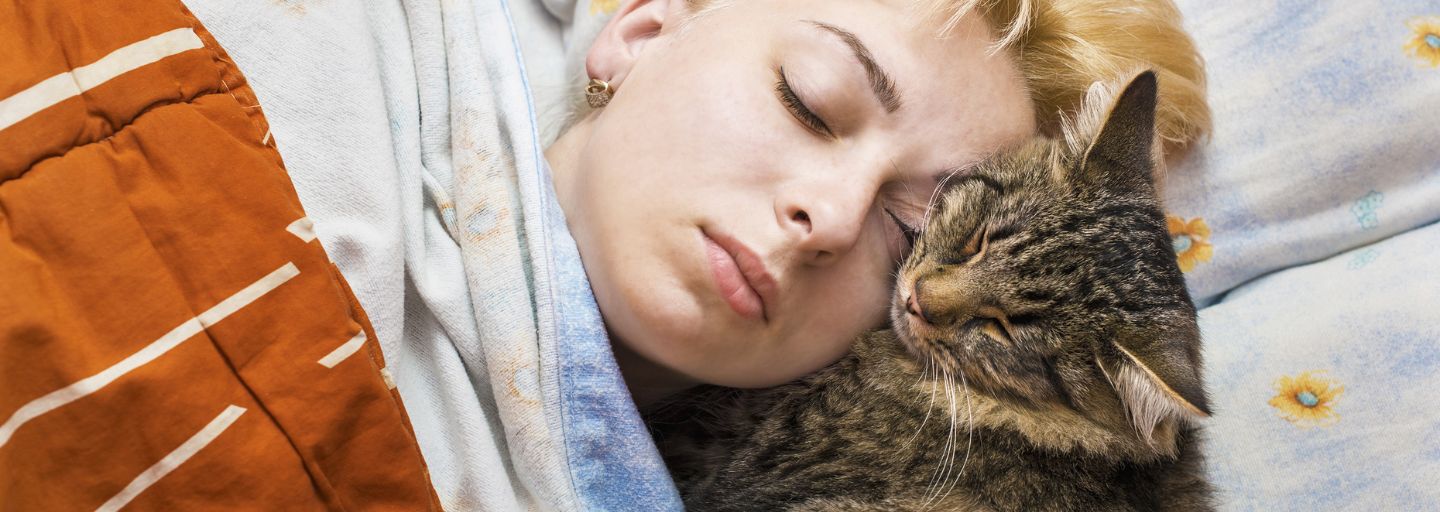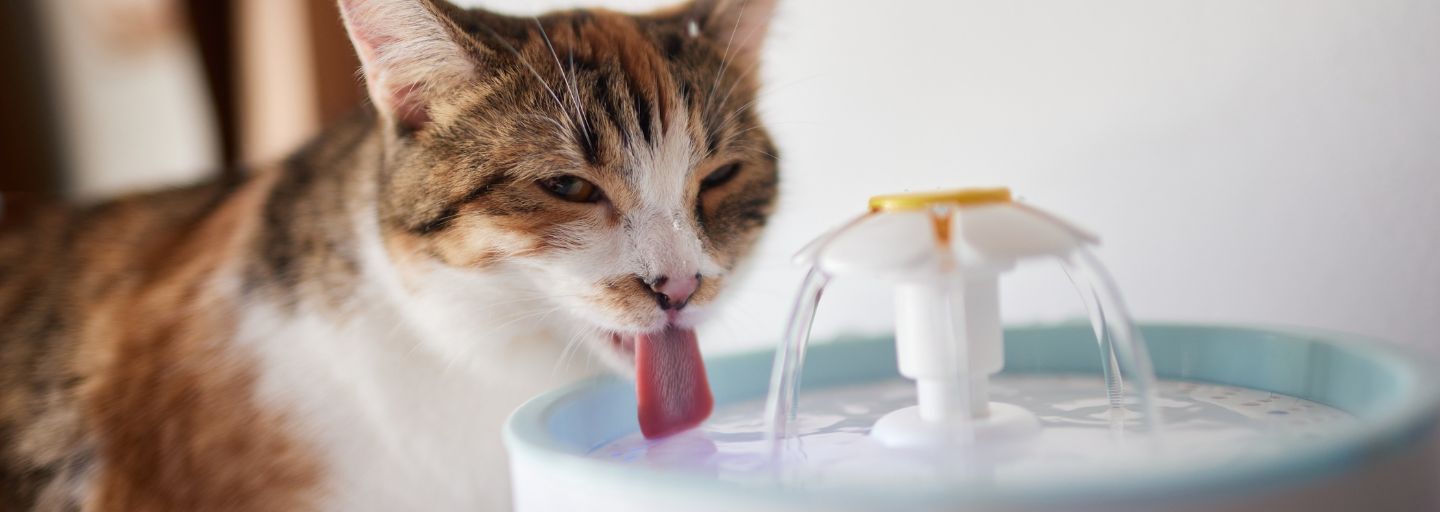Raising a pet helps to give young children a sense of responsibility early on in life. Children raised with pets have shown to be far more sociable as adults and have better communication skills. They are also much less likely to develop allergies towards pet fur.
Knowing how to mix the two, however, can sometimes be a bit tricky, but a little preparation and education can go a long way.
Newborns and toddlers
Your cat’s reaction to a newborn will depend on her genetics, personality, and experience.
Offer your cat a private sanctuary when you first bring a newborn home. Make sure her bed, food and water bowls, and litter trays are placed away from busy areas. Once the baby becomes a toddler, use baby gates to secure your cat’s privacy.
Alternatively, cat havens can be provided in the form of igloo beds placed on top of tables or sturdy shelves.
If your cat is very territorial, the arrival of a baby – and a new scent – may lead to possible upheaval. Your cat may sulk, get agitated, or even try to ‘mark’ her space by rubbing face gland secretions around the house or even spraying new items, such as high chairs and cots, with urine.
Pheromone preparations, which help cats relax, are available from vets and can be applied to new items in advance of the baby’s arrival.
Another way to offset your cat’s displeasure at having an additional family member is by building up a positive association with the baby through treats or rewards.
Remember, cats shouldn’t be comforted when confronted by the arrival of a new baby, as this only reinforces their anxiety. Instead, wait for them to relax or start to play and then cuddle them in another room.
Importantly, continue your cat’s established routine as much as possible. If it needs to change, do it as far in advance as possible. If you think you might be too busy to cope with the demands of both a baby and a cat, you may have to consider rehoming the cat ahead of the baby’s arrival.
Older kids
Most cats love having babies around because it means more visitors and attention for them as well! However, when children start to become mobile, the novelty begins to wear off. Cats don’t like being taken by surprise or chased around by anyone, and a suddenly uncoordinated but persistent pursuit by a toddler can be very disturbing. Offering your cat a retreat at this stage is very important.
Always supervise any interaction between children and your cat until you’re sure that the child is old enough and wise enough to approach and gently handle your cat – and to also figure out when attention isn’t welcome.
Young children should never be allowed to try and pick a cat up until they are strong enough to hold the pet properly.
Teach children:
- Not to chase the cat or pull her tail!
- Where to stroke the cat – the top of the head and along the back. Cats can be very sensitive about their stomachs and may lash out in self-defense if touched in this area.
- The cat should always be left alone when eating, toileting, or sleeping.
- They should wash their hands after stroking the cat.
- How to groom your cat – this can be a good bonding experience for both your cat and the child.
- Believe it or not, bathing can also be a great bonding exercise for children and cats.
Introducing cats and children can be a rewarding experience that fosters a lifelong bond and teaches important life skills to youngsters. By following a few guidelines, such as providing a safe space for the cat and teaching children appropriate ways to interact with their feline companion, the relationship between cats and children can thrive. The benefits of this relationship extend beyond childhood, as studies have shown that children raised with pets tend to be more sociable and develop better communication skills. With careful preparation and education, families can create a harmonious environment where cats and children can grow and learn together, forming lasting connections that will benefit both parties for years to come.







